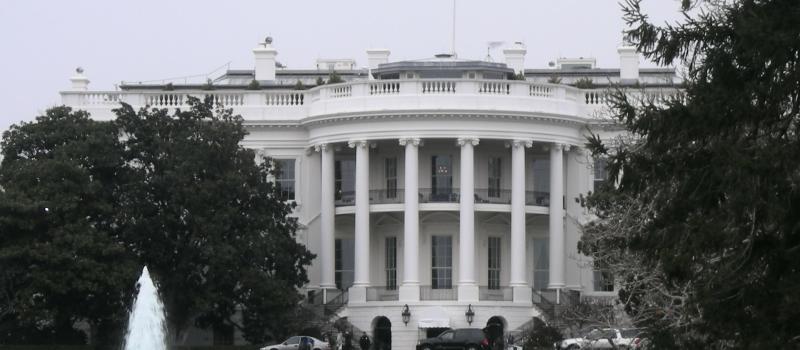The Shutdown Poses a Serious Threat to the American Economy
posted by Robert Shapiro on January 17, 2019 - 12:00am

The government shutdown has produced a serious economic threat that’s hiding in plain sight: The people who collect, analyze and release all the basic data tracking the path of the economy and its principal aspects are on furlough. So, the shutdown has forced thousands of companies and financial institutions and millions of investors to rely on guesswork instead of data, and each week the problem grows worse.
In normal times – which here means anytime but now — the Census Bureau surveys thousands of American businesses every week and through each quarter on every aspect of their operations. The results of these surveys, taken together, describe the path of every industry, and the Bureau of Economic Analysis (BEA) pulls all of those data together to calculate GDP. The official list of these Census surveys, which can be found here, now carries the following notice: “Due to a lapse in federal funding portions of this website are not being updated.” Without any public attention, the shutdown has put all of those surveys on hold.
The Department of Commerce issues most of these data on the economy’s recent performance, and it reports that the shutdown so far has prevented the analysis and release of the November data on imports and exports, construction spending, residential home sales, retail inventories, wholesale trade, and manufacturers’ orders, shipments and inventories. Over the next several days, the Department also will cancel its scheduled releases on manufacturing sales in November, retail sales in December, and residential construction in December.
This confounding ignorance about the economy’s current performance matters a great deal. For example, what’s happening with trade affects the decisions by thousands of companies about how to manage their certain spending, investments and inventories. With no public data on recent imports and exports, those decisions have to rely to rely more on guesswork – and more companies than usual will simply guess wrong. The data on imports and exports also influence exchange rates, so the shutdown will inject more speculation into Federal reserve policy, along with decisions by millions of investors. In the data-free world of this shutdown, Donald Trump can no longer know if his tariffs are working.
Everyone who collects and analyzes the monthly data on residential housing construction, new and existing home sales, and business investments in new offices and factories also is on extended forced leave. As a result, the thousands of companies that produce the goods and services used to build and outfit new structures and to furnish existing home and buildings also have to rely more on intuition than facts. Inevitably, the intuitions of many of those companies will prove wrong, inflicting unexpected costs on their workers and their shareholders.
The shutdown also will complicate any efforts by Trump to make good on his pledge to “bring back manufacturing.” Consider a widget producer in Ohio thinking about expanding production or opening a new factory. But Trump’s Commerce Department has suspended the analysis and release of any recent monthly data on widget industry orders, sales and inventories, or foreign demand for U.S. widgets and U.S. demand for foreign widgets. Unless the company is willing to risk a shareholders’ lawsuit if an expansion undertaken during the shutdown goes badly, its only reasonable option is delay for new investments to increase its production.
The quarterly GDP measure is the analytic sum of all these and other data, and the BEA is scheduled to issues its GDP estimate for the fourth quarter of 2018 and all of 2018 on January 30, 2019. Even if the shutdown ends before the end of this month, BEA will likely not issue the GDP estimate on January 30, because the shutdown already has suspended the collection and analysis of the underlying data for weeks.
Do the GDP data really matter? I gained s personal insight into this issue some time ago, when I was Bill Clinton’s Under Secretary of Commerce and oversaw BEA and the Census Bureau. Here’s the background: Through much of the 1990s, the Commerce Department and White House had repeatedly asked Congress for a little money to upgrade BEA’s computer network. The amount was truly trivial — $5 million to $10 million – and for a number of equally trivial reasons, Congress had repeatedly failed to appropriate it. By 1999, this failure had brought BEA’s capacity to analyze the economy’s data near its breaking point.
I took on the task of cajoling Congress to give BEA the money it now needed so desperately. I asked the head of BEA to tell me what services he might have to suspend if Congress again failed to come up with the additional funds. When he said, “maybe the monthly revisions to GDP,” I sensed I had what was needed. I issued a press release warning that unless Congress appropriated the money, BEA would be forced to delay or shelve the monthly GDP revisions. Later that same day, Federal Reserve Chairman Alan Greenspan denounced Congress for endangering the economy by shortchanging BEA, and congressional leaders found the money.
GDP is the only standard gauge we have of the pace and direction of the overall economy and its major components, and the measures that comprise it help shape long-term business and financial planning and short-term investment algorithms. The Census Bureau surveyors and BEA analysts eventually will go back to work, and in due course produce reliable economic data again. Yet, for now, the fact that reliable measures of recent GDP and its components are unavailable can only generate more economic uncertainty as well wrong business decision. In an economy stumbling towards a slowdown, all Americans, in time, will share the true economic burdens of this shutdown.

